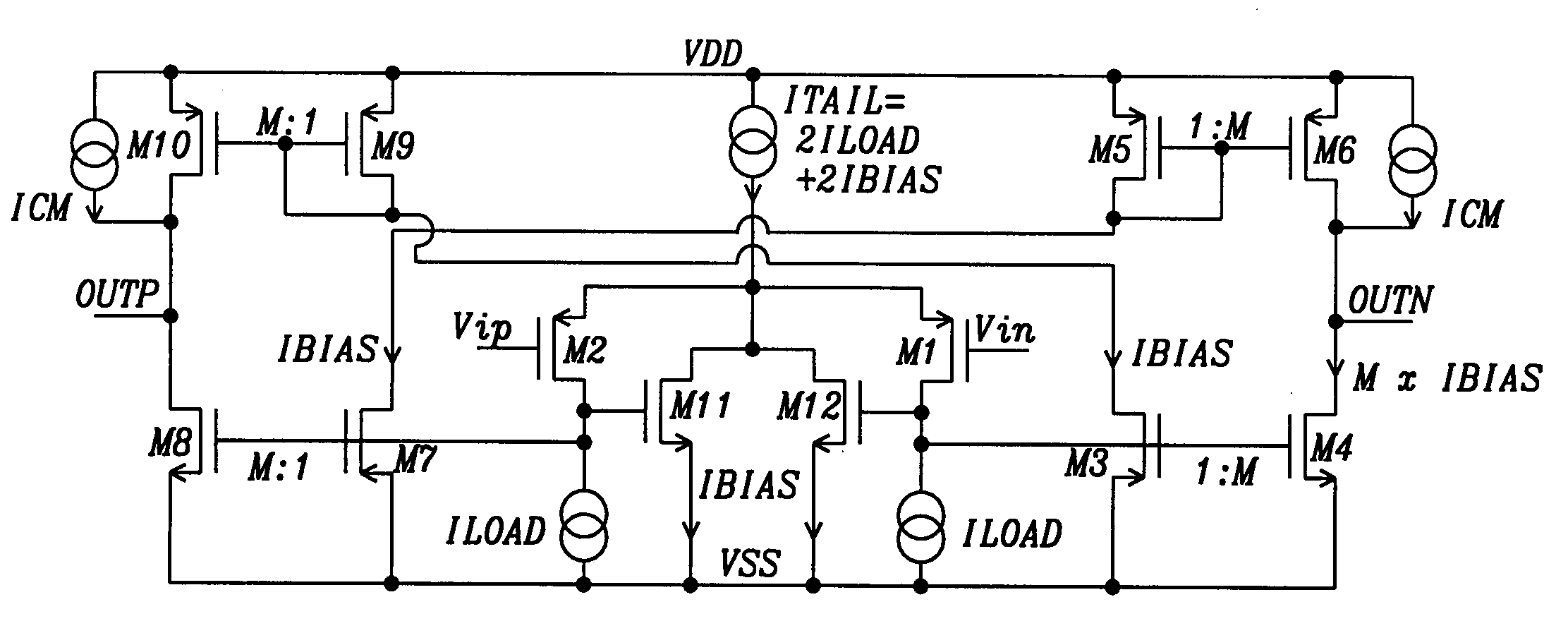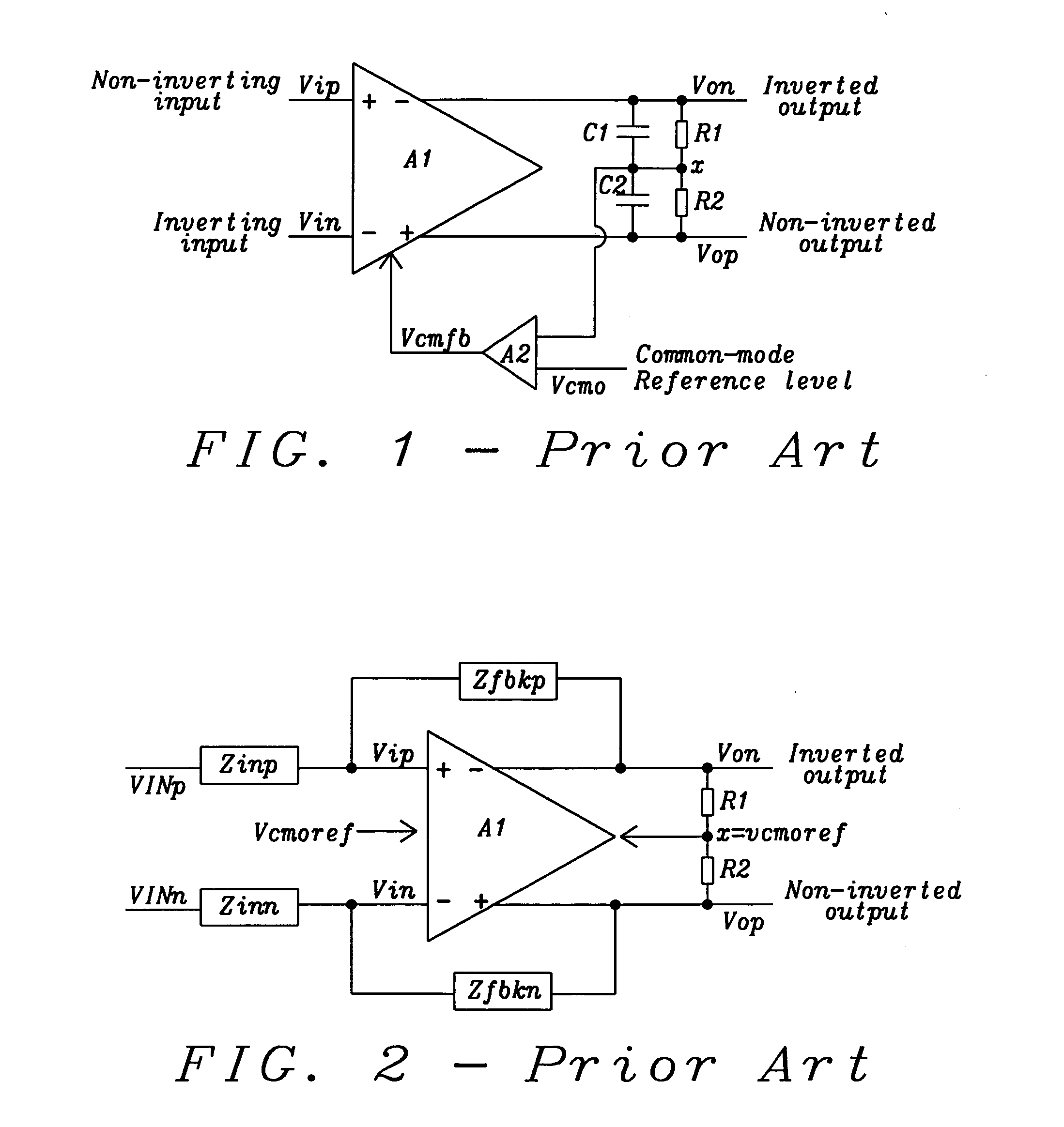Amplifier common-mode control methods
a common-mode control and amplifier technology, applied in amplifiers, amplifiers with semiconductor devices/discharge tubes, electric devices, etc., can solve the problems of requiring significant additional silicon area in integrated circuit implementations, requiring significant extra power to drive, and affecting total harmonic distortion (thd), etc., to achieve the effect of saving power or area, reducing area, and power requirements
- Summary
- Abstract
- Description
- Claims
- Application Information
AI Technical Summary
Benefits of technology
Problems solved by technology
Method used
Image
Examples
Embodiment Construction
[0053]Methods and circuits to overcome usual area and / or power trade-offs in designing resistive common-mode control in differential amplifying and filtering circuits are disclosed. The invention can be applied to any amplifying and filtering circuits, which provide a DC feedback connection between circuit's differential outputs and inputs.
[0054]Referring to a typical application of a differential amplifier as shown. e.g. in FIG. 2 prior art three common-mode voltages can be identified:
[0055]Differential signal inputs common-mode voltage=Vcmin=(VINp+VINn) / 2 (3a)
[0056]Differential outputs common-mode voltage=Vcmo=(Von+Vop) / 2 (3b)
[0057]Amplifier differential inputs common-mode voltage=Vcm=(Vip+Vin) / 2 (3c)
[0058]These are not completely independent voltages. Assuming the amplifier inputs draw negligible current (usually true with FET inputs—but not essential to make the method work), then by potential division:
Vcm=(Zfbk.Vcmin+Zin.Vcmo) / (Zfbk+Zin) (4)[0059]where “.” in equation (4) deno...
PUM
 Login to View More
Login to View More Abstract
Description
Claims
Application Information
 Login to View More
Login to View More - R&D
- Intellectual Property
- Life Sciences
- Materials
- Tech Scout
- Unparalleled Data Quality
- Higher Quality Content
- 60% Fewer Hallucinations
Browse by: Latest US Patents, China's latest patents, Technical Efficacy Thesaurus, Application Domain, Technology Topic, Popular Technical Reports.
© 2025 PatSnap. All rights reserved.Legal|Privacy policy|Modern Slavery Act Transparency Statement|Sitemap|About US| Contact US: help@patsnap.com



